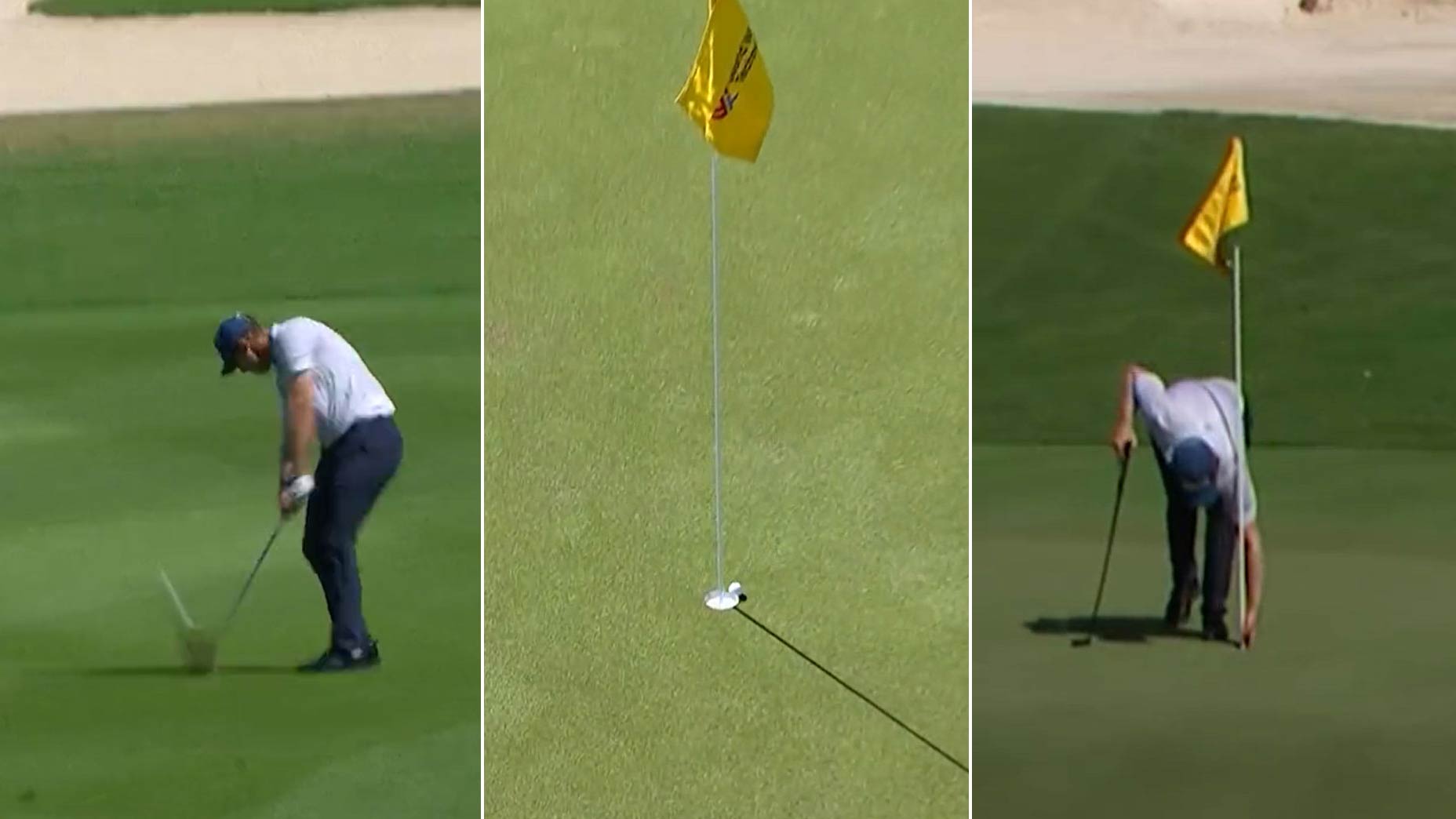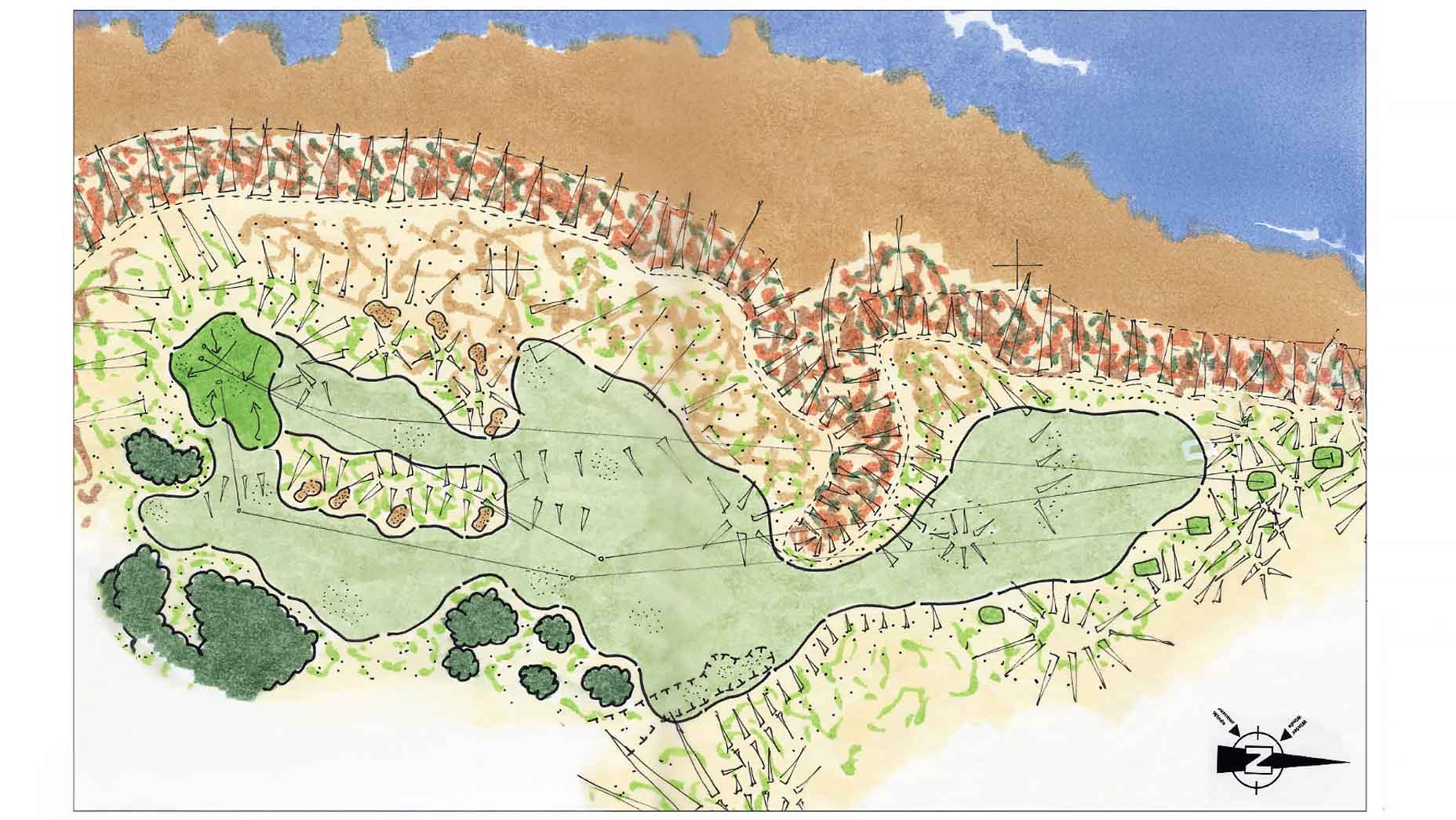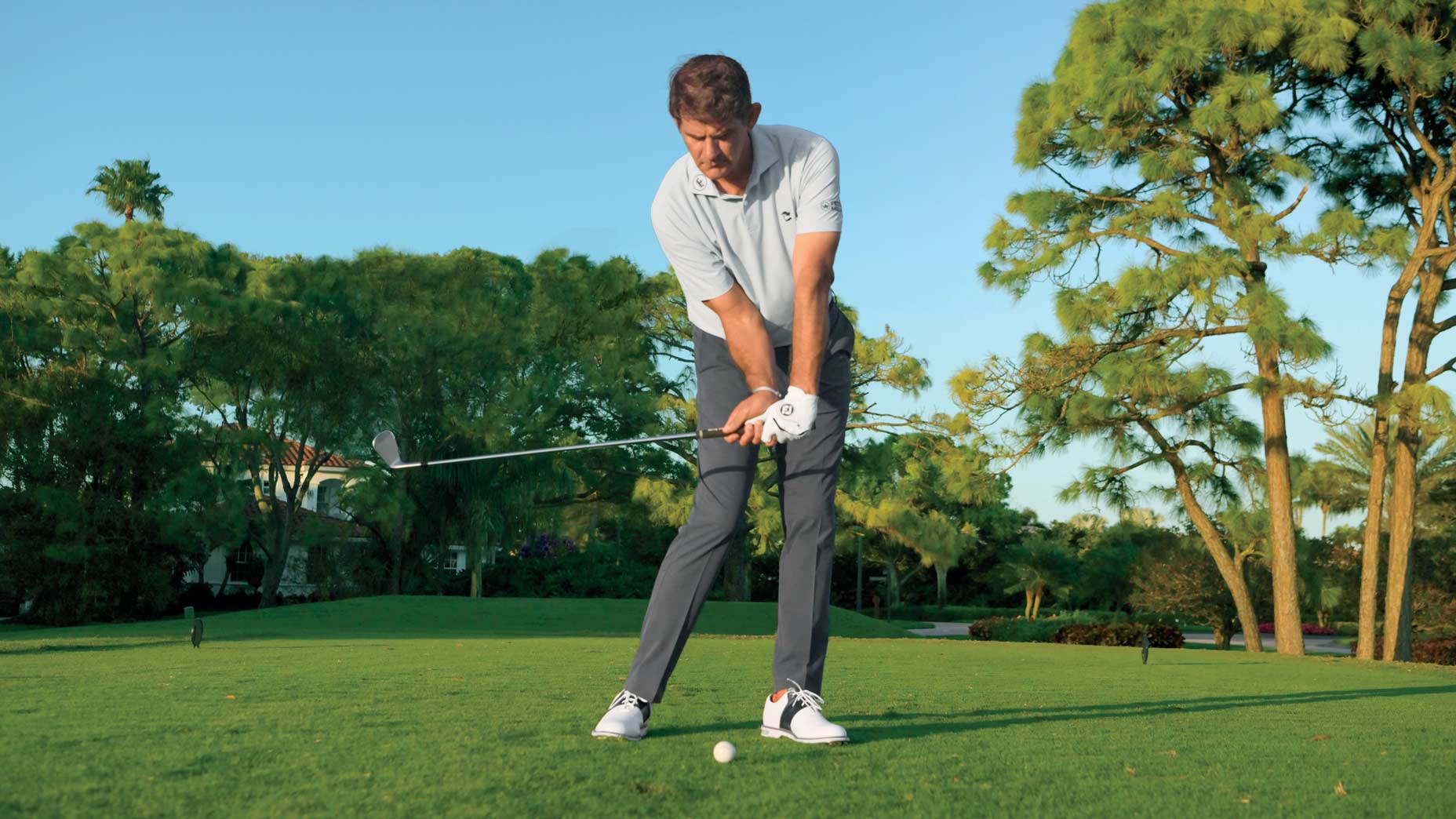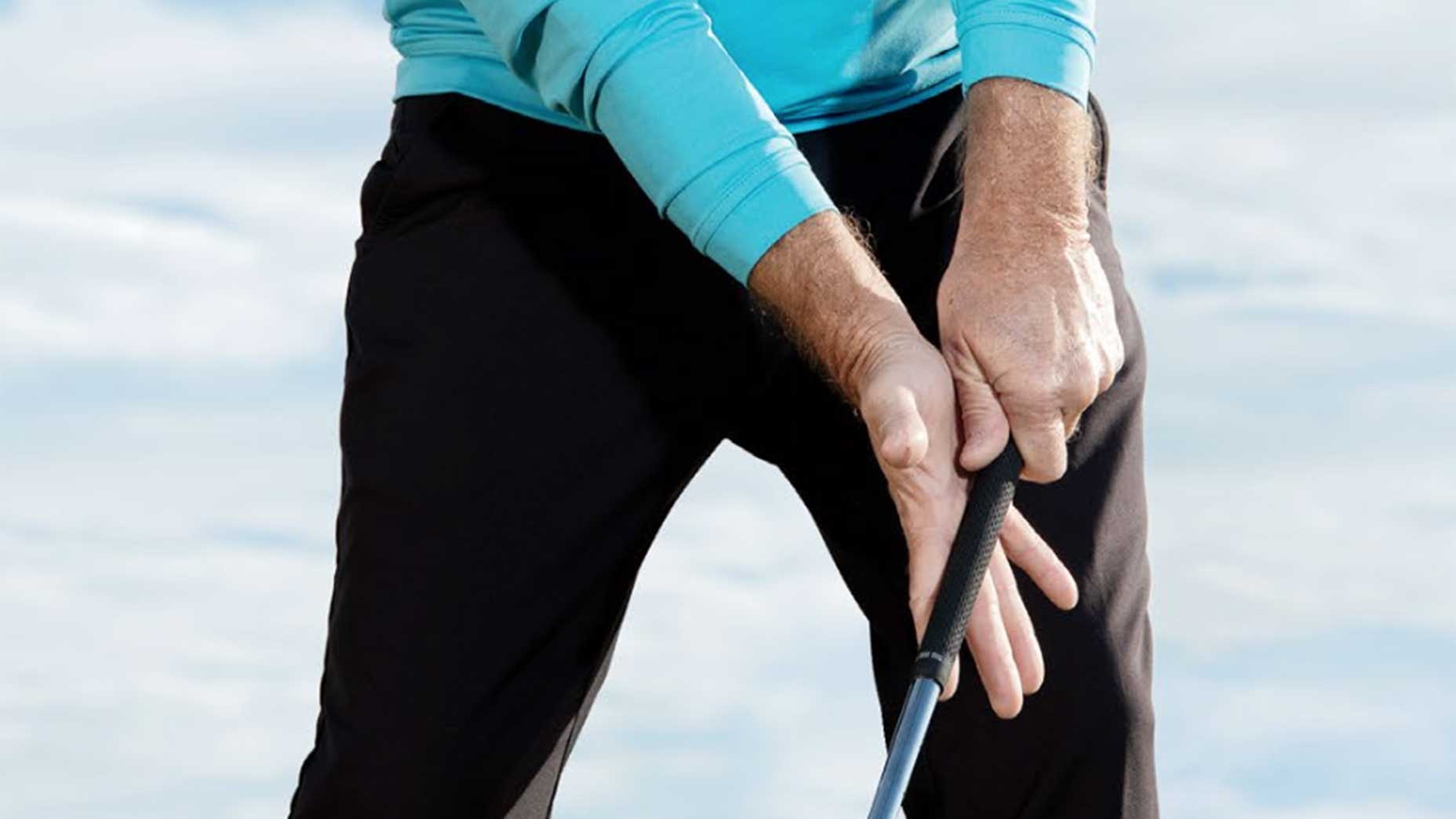At 36, earnest Irishman Seamus Power is still coming into his own. It wasn’t until last year that he played his first major championship, after all — but he played four of ’em, and finished top 30 in three. His best result came in a T9 at the PGA Championship; Power has two PGA Tour wins now but speaks just as highly of that major showing. There’s pride in stepping onto golf’s biggest stage and rising to the occasion.
One year after that Tulsa top 10, Power is putting together his best season on the PGA Tour. He’s climbed inside the top 40 in the world after eight consecutive top-25 finishes on Tour. He’s No. 12 in the FedEx Cup. He has the inside track on a Ryder Cup spot. And he seems eager to keep enjoying the process of getting better.
It’s no secret that major winners Padraig Harrington, Rory McIlroy and Shane Lowry have stolen the spotlight when it comes to Irish success. But that doesn’t mean Power’s given up hope of a moment of his own. He’s shown he has the game, after all. Why shouldn’t he be on the brink of something major?
(This interview was originally published in the May 2023 issue of GOLF Magazine.)
***
The scene: St. Patrick’s Day morning, on the phone from Power’s home in Las Vegas.
Dylan Dethier: Hey. It’s St. Paddy’s Day. In the States, how does a guy like you lean into his Irish culture?
Séamus Power: Well, today I’m going to be leaning into it all over the place, probably at some pub in a few hours. Every Irish person is very proud of being Irish. There’s a lot of pride for such a small country.
DD: You grew up in Waterford — Ireland’s oldest city. How on earth did you end up at East Tennessee State?
SP: It’s funny, I remember getting asked that a lot when I first came to college [in 2006]. My freshman year, our starting five were, weirdly, all from Great Britain and Ireland. Our coach, Fred Warren, was one of the first to really embrace international recruiting. Even well before my time there, there was a line of players from Great Britain and Ireland, so everybody back home would have known about East Tennessee State. But look, it’s Johnson City, Tennessee. You’re not necessarily getting the top U.S. recruits there, so [Fred had to] think outside the box. And, for me, it was a great opportunity in terms of a scholarship.
DD: Rory McIlroy was committed to play there too, right?
SP: It’s funny how things work out. Rory’s younger than me, but because of the schooling system in Northern Ireland he would have started college earlier. So if he went, I probably wouldn’t have ended up there, because he would have been on full scholarship. I imagine that I might have still had a spot, but I might not have been able to afford to go. I’m pretty sure Coach still has his signed letter of intent from Rory framed somewhere.
DD: You’ve settled in nicely on the PGA Tour — a win this season in Bermuda and a few more top 5s. You’re currently in the top 40 in the world. But it wasn’t an easy path for you from college to the pros, was it?
WATCH: Seamus Power makes ace and TWO additional hole-outs in epic roundBy: Kevin Cunningham
SP: Mini-tours is tough going. It’s not the glamorous life that people picture when they hear professional golf. I was very lucky; the eGolf Tour, which isn’t even around anymore, was fantastic. I moved to Charlotte, which is where the tour was based, so I could keep expenses down, and the purses were great, the bonuses were great, and I was able to play well enough that I could pay my own way, break even. In 2011, I missed at Second Stage at Q-School by, I think, a shot. One year I got sick at First Stage and, I think, finished last. Another year, I missed again at Second Stage by a shot. But, by the end of 2014, I’d played really well in the mini-tours all year and eventually got through Q-School.
DD: How different a player are you now compared to then, battling at Q-School?
SP: It’s a bunch of little things, to be honest. Even my first few years on Tour weren’t as good as I wanted. But, it’s funny, I worked with so many top coaches that I was always working on something. I was never ready to play; I always felt like I was three or four weeks from something. So many tournaments, it’d be Tuesday, Wednesday, and I’d be working on this position, that position, then I wouldn’t play well and I’d think it was because the position wasn’t right. I had to get back to playing golf instead of just trying to swing a swing. Honestly, I haven’t worked with a coach for a couple years now. I was 33 or 34 and realized, Look, the swing I have now is basically what I’m going to do. Some weeks it works, some weeks it doesn’t. You hang in there as best you can. I used to go to somebody else looking for answers. Now, I look to myself.
I was at practice, and I was cheering myself on, like, Yes, I’ve found it! I’ve been playing for 25 years, and I still get that amazing feeling.”
DD: You’d never competed in a major until last year, when you played in all four and finished top 10 at the PGA. How are they different from regular Tour events?
SP: Just that thought in everybody’s mind of what it would mean if you win. The PING guys said I’d feel it as soon as I got to the range, and it was so true. The buzz around it. The atmosphere. The anticipation. It was different, but it was really fun. It made you want to be part of so much more.
DD: Did you give serious thought to joining the LIV tour?
SP: Look, there’s no guarantee I’ll ever make a Ryder Cup, but giving up even the opportunity to make a Ryder Cup was going to be too much for me. I just — I really enjoy what I’m doing, and the PGA Tour has been fantastic. This is my seventh year on the Tour, and I’ve really enjoyed it, even when it wasn’t going well. Some guys have gone [to LIV], and I understand that. For me, it was not something I looked at for too long. But with the current changes and all these purses on the PGA Tour, it’s hard to imagine going anywhere else, at least right now.

TravisMathew Heater Polo
DD: It’s clear you’re enjoying this. What’s your favorite part about life as a pro?
SP: For me, it always goes back to the game itself. I was at practice yesterday, and I was cheering myself on, like, Yes, I’ve found it! That moment where it’s not quite right and then all of a sudden the ball starts coming out down the middle? I’ve been playing for 25 years, and I still get that amazing feeling in practice. That’s the thing I still love about the game. Sometimes you think you’re miles away, and sometimes you think you have it, and it’s just — it’s a game that has to be played. Even when it isn’t going well, I love it.
DD: You’re currently near the top of the FedEx Cup standings, in the Ryder Cup conversation and climbing in the world ranking. What’s next for you?
SP: I was at the fringes of contention at a couple majors last year, and I’d love to get in there in the last, second-to-last group and really test all that stuff we practice. One of my biggest goals at the start of the year was to get to the Tour Championship, and I’m in a good spot so far for that. But, y’know, in golf you want to do something that’ll be remembered. A lot of that stuff is done in the majors, in the big events, in the Irish Open, at the Ryder Cup. That’s the stuff I’m striving toward.











